Al-Pac Adventure – Wishing for Fishes (and Swallows)
4 juillet 2019 14:55 Laisser vos pensées
Hi there dear readers,
Welcome to another blog. I’ve been very busy with field work, since my last blog entry. It has truly been a dream.
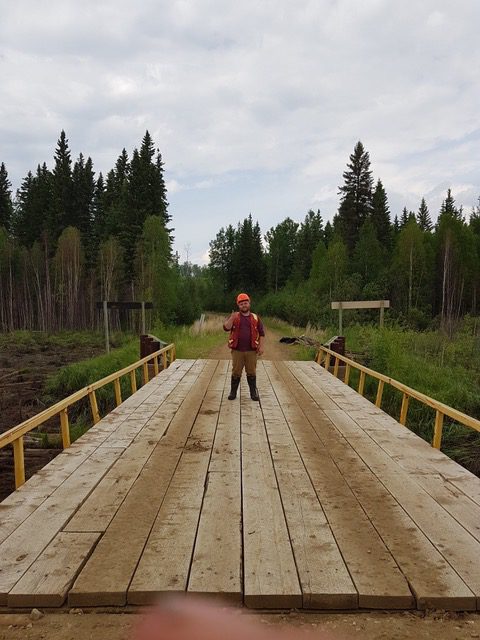
An important component of forestry field work is using an ATV to travel to field sites. At Al-Pac, the Woodlands summer students receive a full day of ATV training. Prior to this position, I had not operated an ATV since I was a child. Even with the training, I was still feeling ambivalent about using an ATV. My first day using an ATV was informative as I learned about the minutiae of ATVs that I was unsure about. Most importantly, I had heaps of fun!
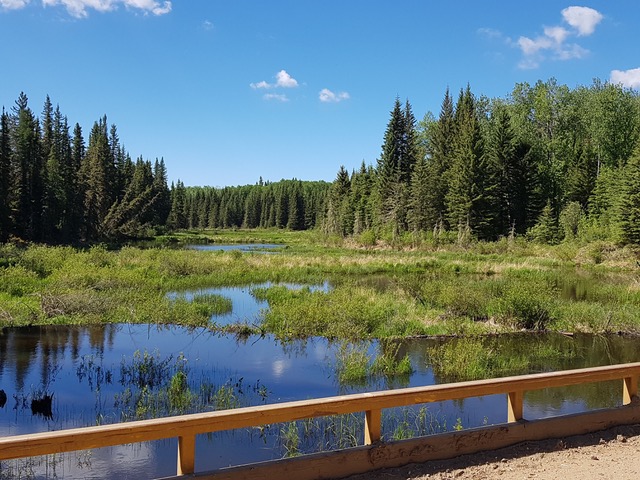
As part of the layout process, stream crossings are marked on maps, checked for quality, and assessed for fish habitat. To achieve this, a consultant, a summer student, and I traveled to various crossings on the layout map. At these crossings, we would take various measurements of the stream including water temperature, depth, and flow. Many of the crossings we surveyed are classified as swamps, fens, or marshes. Although it is not prime fish real estate, it is important to conduct quality checks to minimize environmental impacts. Despite the lack of fish, I managed to test the limits of my rubber boots. I was 3 cm away from a boot full of water while checking the depth of the stream. Such a tight rope to tread, while filled with wet sock dread.
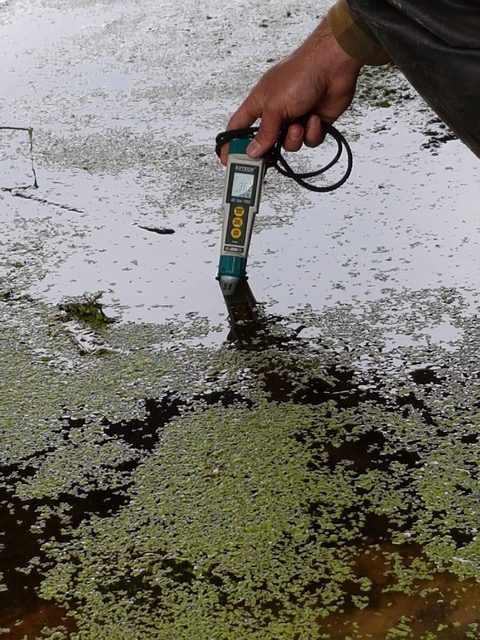
I have never been a fish person, but I learned to appreciate them after analyzing their habitat. Who knew fish are so picky about the places they swim in? I valued the opportunity to conduct fish surveys and learn more about this area of field work. It took us 3 days to finally find a fish-bearing stream and it was worth the wait. It was exhilarating to see a fish after an ATV ride to the study site. I was unable to use the electrofish equipment this week so I haven’t crossed catching a fish off my list.
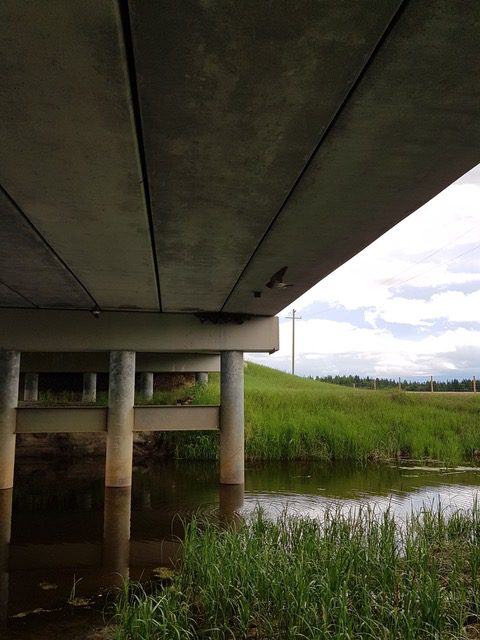
Another exciting project that I was involved in was surveying bridges across the FMA for fish bearing habitat and barn swallow nests. Barn swallows are listed under the Species At Risk Act and require specific protection management. To do this, Al-Pac monitors barn swallow nests under bridges across the FMA. Barn swallows build their nests on the undersides of bridges. I looked for these nests, while doing stream assessments. Cliff swallows also build nests under bridges so it’s important to be capable of distinguishing them. At the beginning of the summer, I didn’t expect that I would be birding underneath bridges, but there I was!
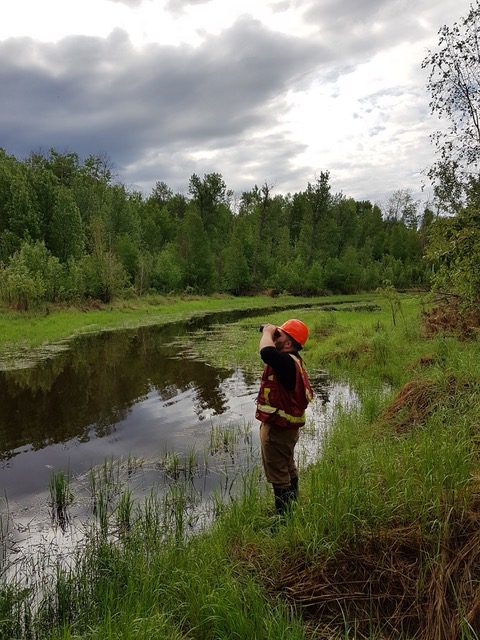
I recently checked off another summer goal of mine, tour Al-Pac’s mill site. All of the summer students from the Woodlands department were given the opportunity to tour the Woodroom. The Woodroom is where all of the harvested wood from the FMA is debarked and made into wood chips. The process begins with lumber, unloaded by crane, that is either stacked in giant log piles or fed directly into the debarker. The debarker is like a giant tube that slowly rotates with all the logs rolling around and losing their bark inside. After this step, the debarked logs are chipped and stored before moving further into the mill.
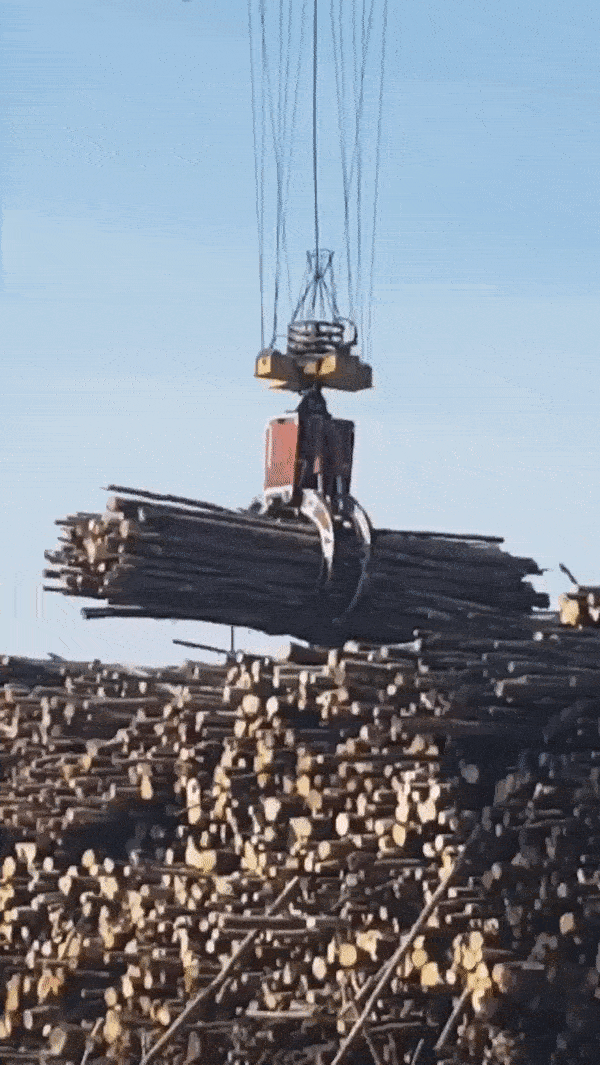
A group of students from the University of Alberta visited Al-Pac for a mill and field tour and I was lucky enough to join. Since I spend some of my days working in the office, it is easy to forget how ginormous the mill actually is. As part of the tour, we explored the mill and observed the various boilers, presses, and other things beyond my knowledge. The entire tour was like a “How It’s Made” episode. Al-Pac specializes in kraft pulp which is shipped to other companies to be made into a variety of products like paper, tea bags, glossy magazine covers, and packaging.
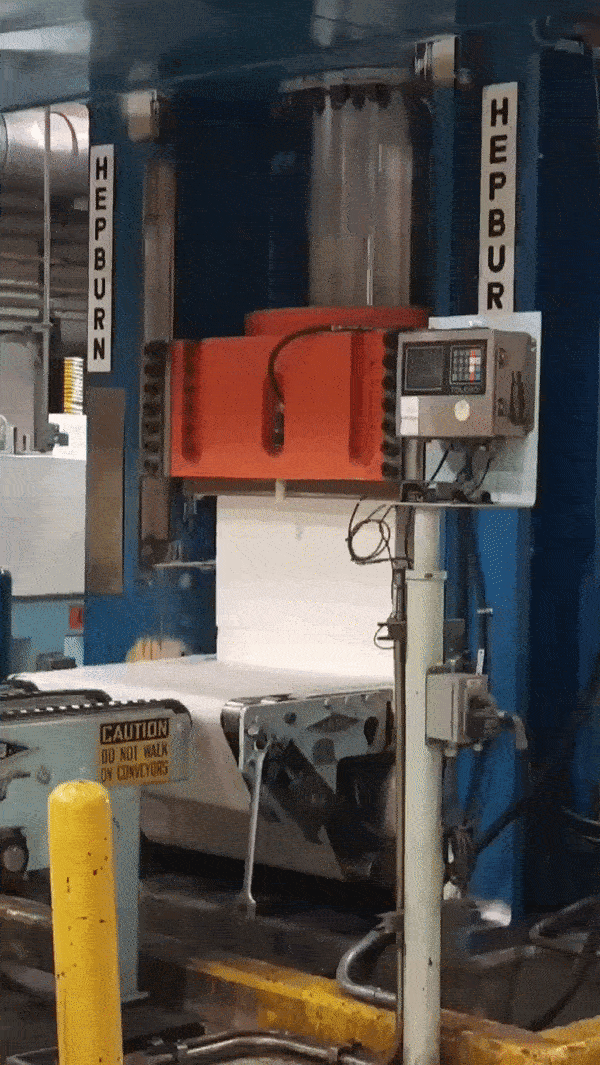
Thank you for taking the time to read my blog this week. Check out my next blog to learn more about my experiences in preparing a plant collection and conducting tree plant checks!
